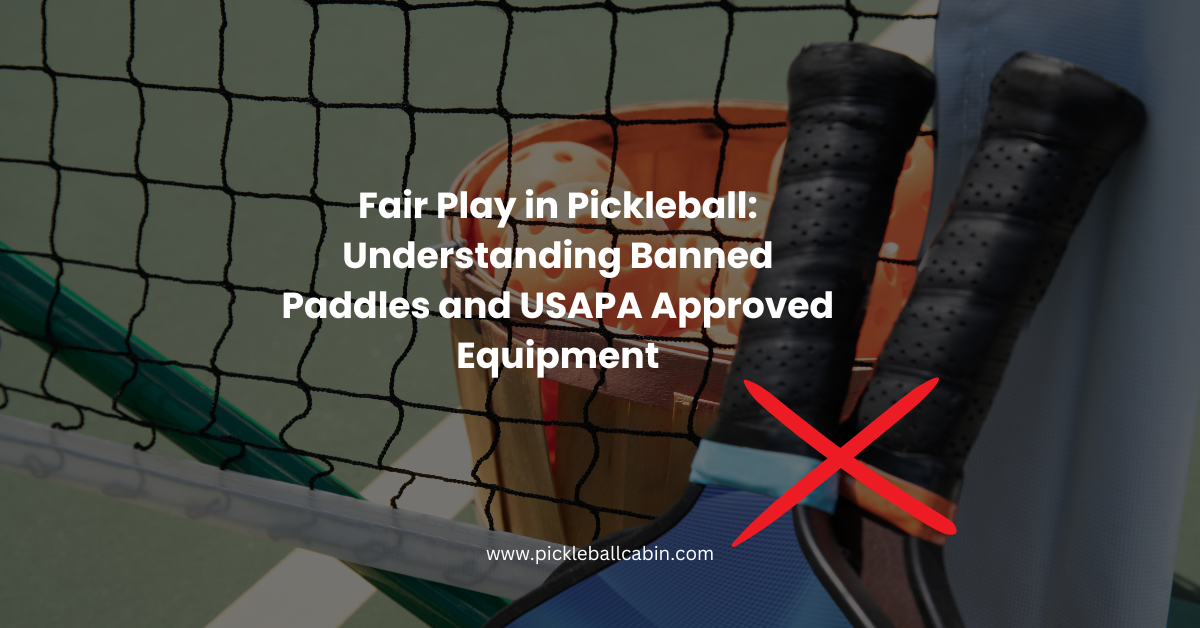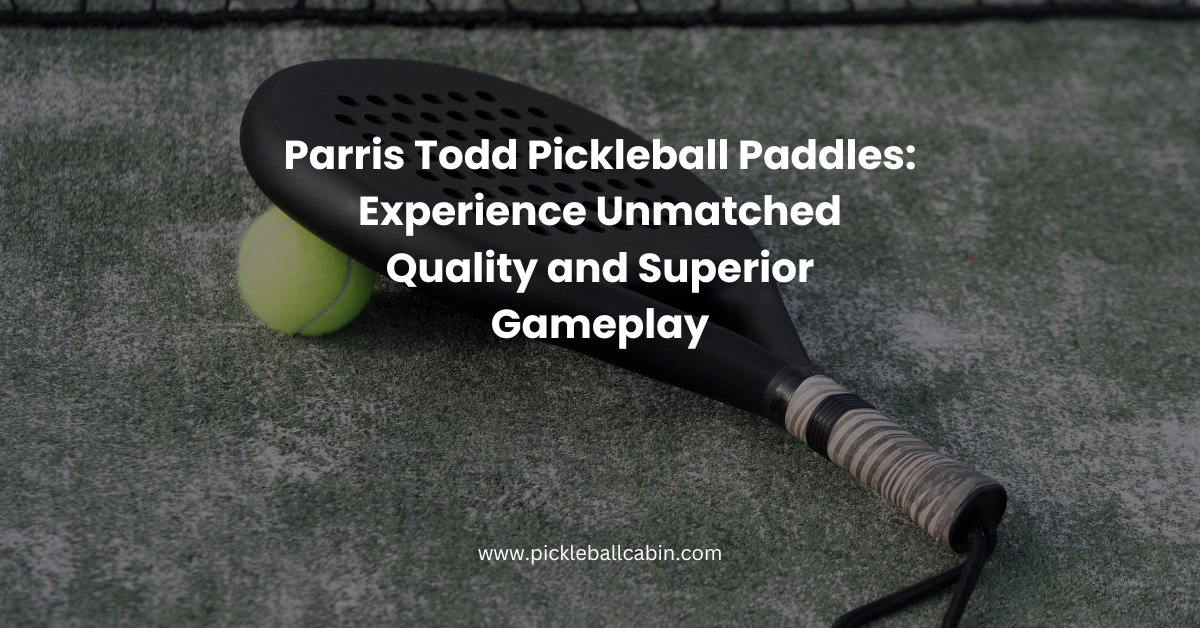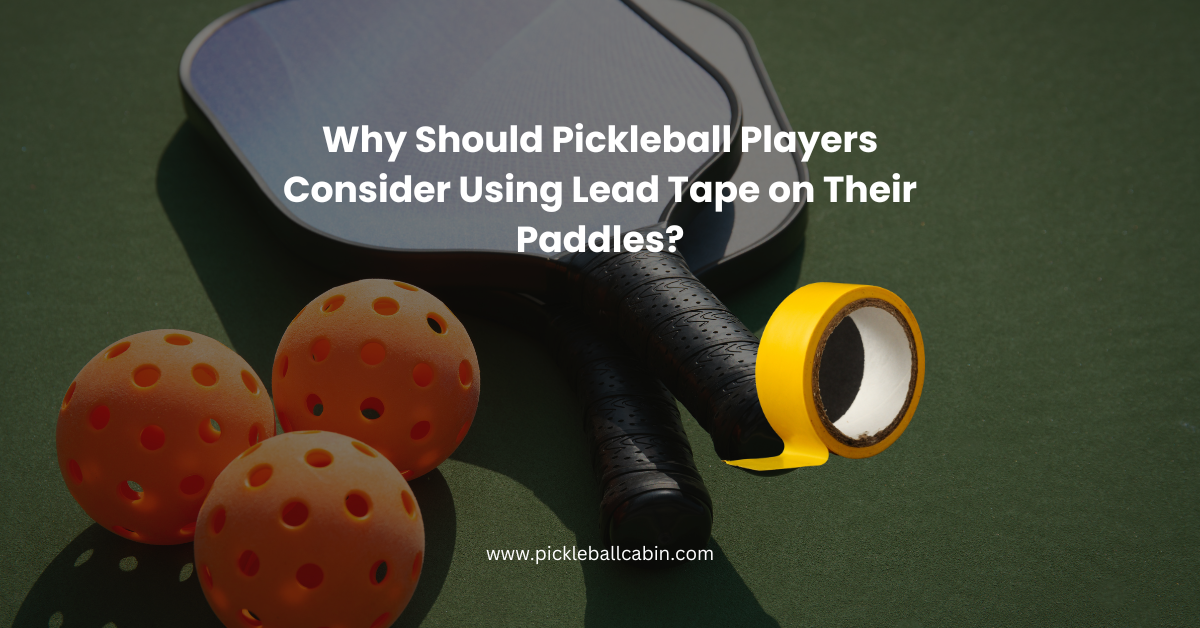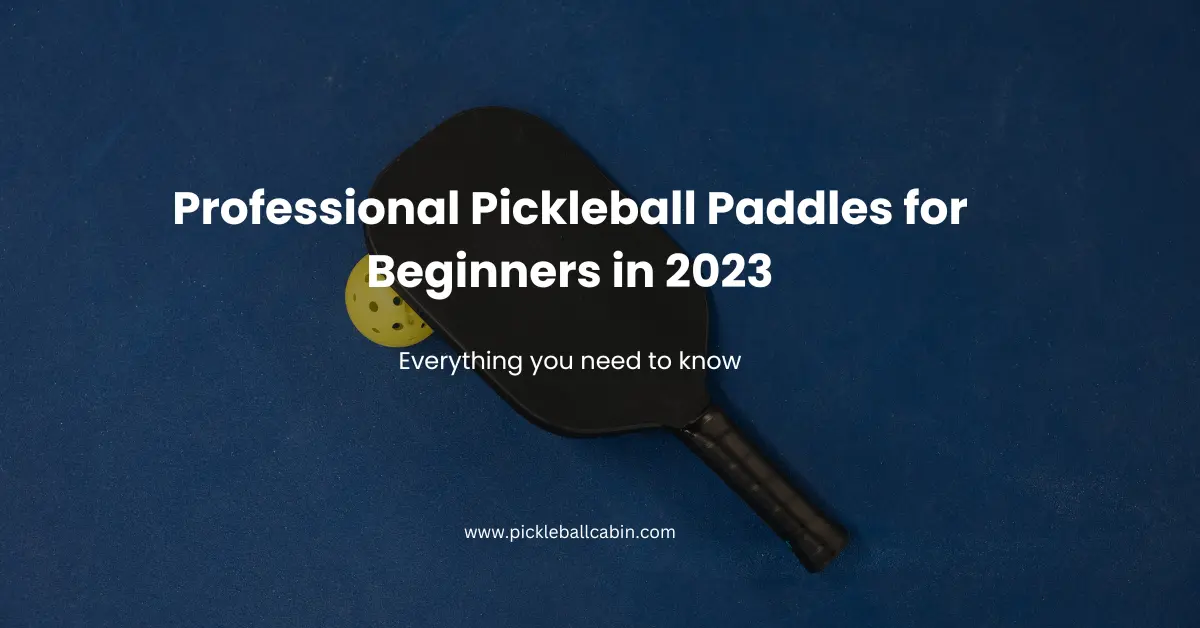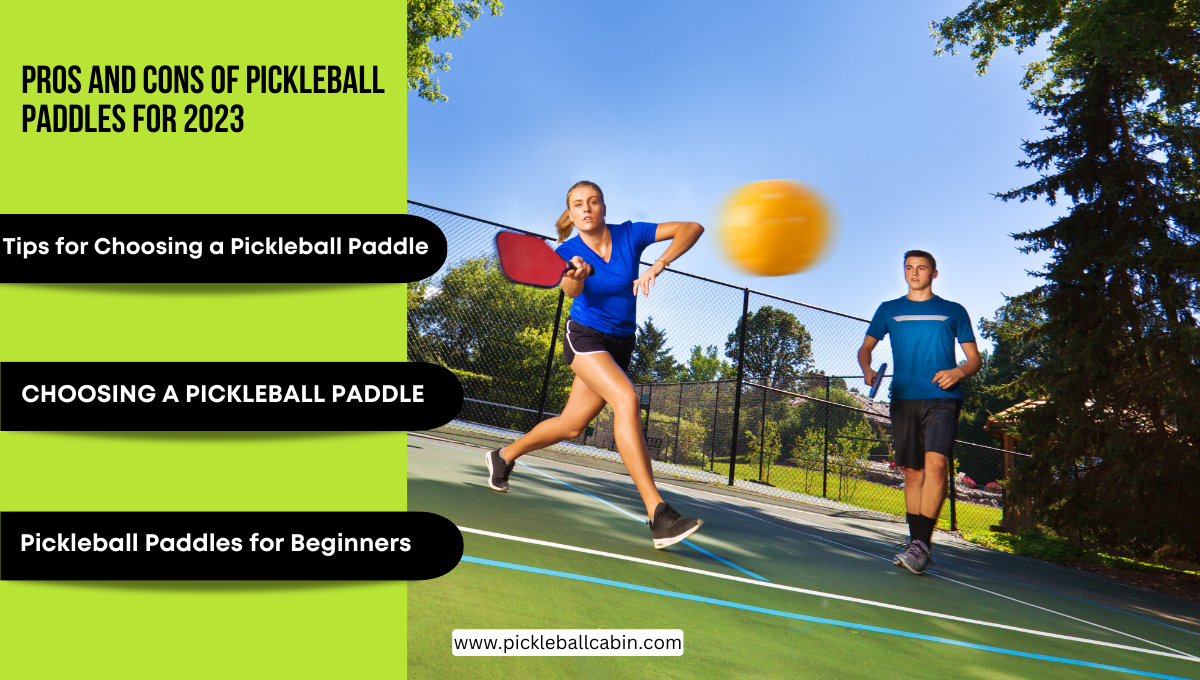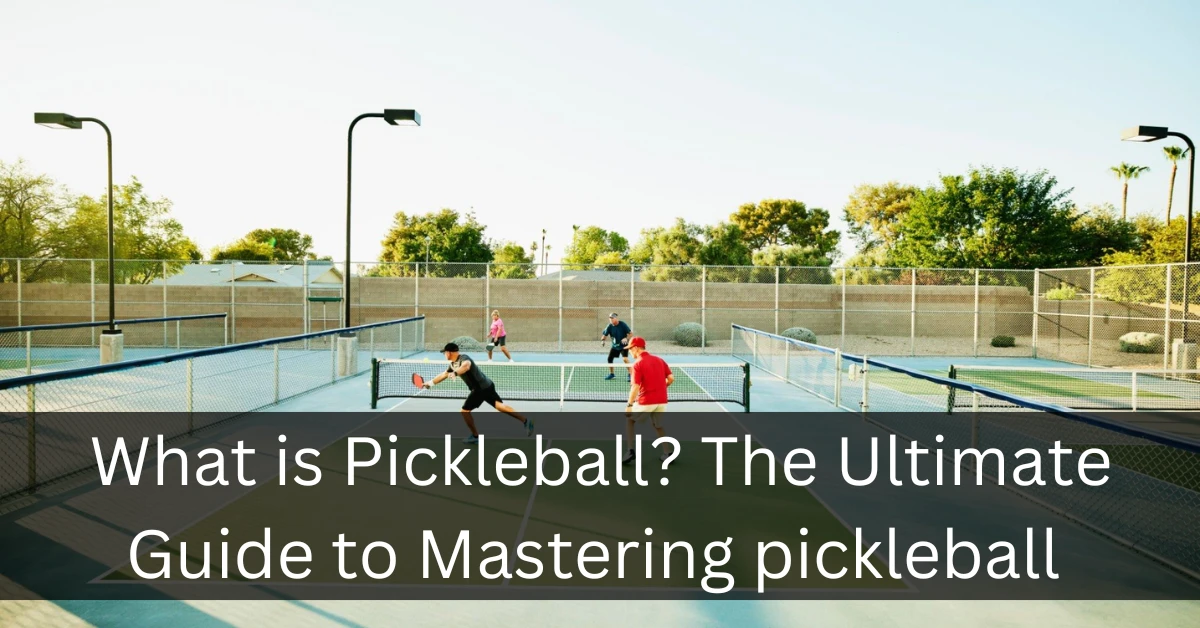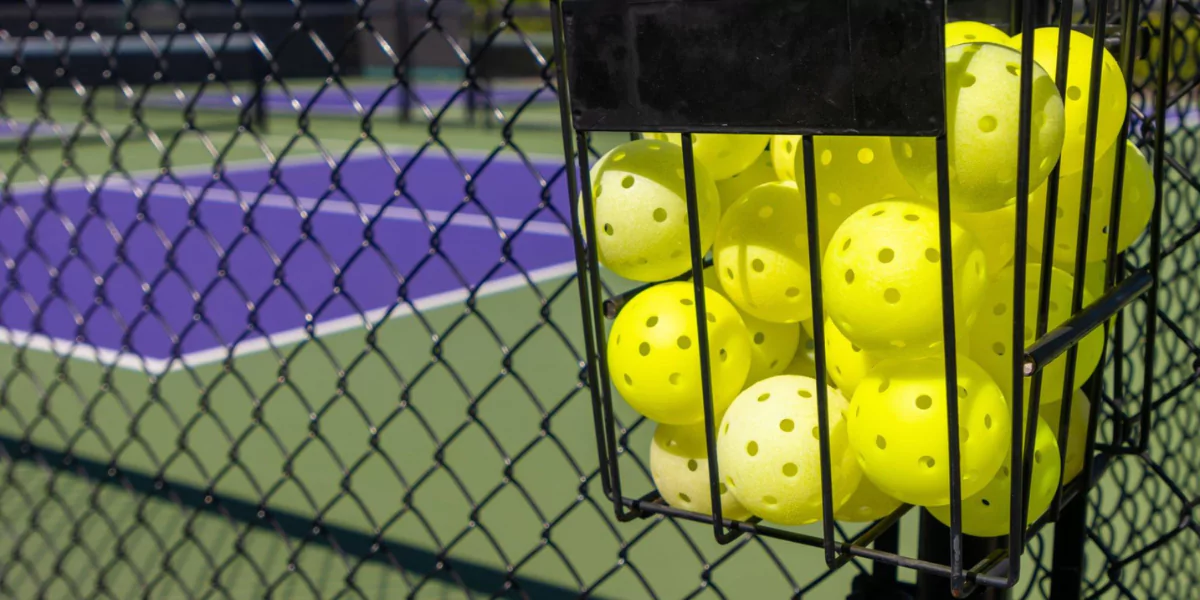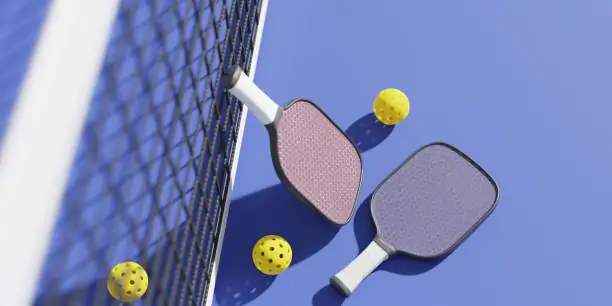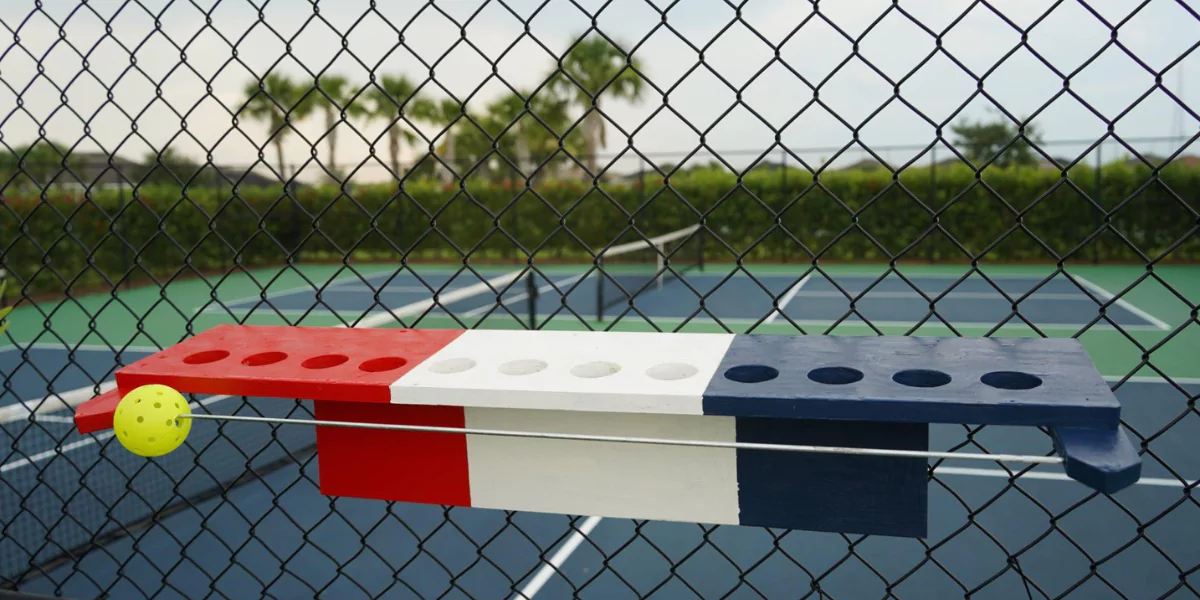Choosing the appropriate pickleball equipment may make or break your game in the exciting world of pickleball. The paddle, a fundamental component in this fast-paced sport, comes in a variety of shapes, sizes, and materials, each of which provides a distinct playing experience.
Did you realize, though, that not all paddles are created equal? Certain paddles are banned from competitive play to maintain fairness and the integrity of the game. So, are you being honest? Join us as we investigate the world of pickleball paddles, both allowed and prohibited. Let’s get started!
One important aspect of pickleball equipment is the paddle. Pickleball paddles come in various shapes, sizes, and materials, each offering a unique playing experience. However, to maintain fairness and uphold the integrity of the game, certain paddles are banned from competitive play. These banned paddles may provide an unfair advantage or alter the nature of the game.
USAPA Approved Paddles
Before diving into the paddles that are banned, it’s essential to understand the concept of USAPA approved paddles. The USA Pickleball Association (USAPA) is the governing body for pickleball in the United States. They have established guidelines and standards for equipment, ensuring a level playing field for all players.
USAPA approved paddles meet specific criteria regarding size, weight, and materials. They undergo rigorous testing to ensure they comply with the regulations. These paddles are suitable for use in all levels of play, including sanctioned tournaments.
USAPA approved paddles provide players with the confidence that they are using equipment that meets the standardized specifications. These paddles are designed to offer optimal performance while ensuring fair play. They are made from approved materials, ensuring safety and durability. The rigorous testing process carried out by the USAPA guarantees that these paddles meet the highest quality standards.
Paddles Banned by USAPA
While USAPA approved paddles are widely accepted, there are certain paddles that are deemed illegal for competitive play. These banned paddles may provide an unfair advantage or deviate too far from the standardized specifications.
The USAPA maintains a list of banned paddles that players and tournament organizers should reference to ensure fair play. This list is regularly updated to include new paddle models that do not meet the approved standards. It is essential for players and organizers to stay informed about these banned paddles to avoid disqualification and maintain fairness in the game.
Examples of Banned Paddles
- Paddles with Illegal Materials: Some paddles are banned due to the use of materials that are not approved by the USAPA. This could include paddles made from metal, glass, or other materials that provide an unfair advantage. It is crucial to check the manufacturer’s specifications and consult the USAPA list of banned paddles to ensure compliance.
- Oversized Paddles: Pickleball paddle size is regulated to maintain fairness. The USAPA sets limits on the length and width of paddles to create a level playing field. Paddles that exceed these dimensions are considered illegal. The maximum length allowed is 17 inches, and the maximum width is 7.25 inches.
Oversized paddles can give players an unfair advantage by providing a larger hitting surface, which can generate more power and control. This can significantly alter the dynamics of the game, favoring players using oversized paddles. To ensure fair competition, it is important to adhere to the size restrictions set by the USAPA.
- Paddles with Unconventional Designs: Paddles with unconventional shapes or designs may also be banned. This is to prevent players from gaining an unfair advantage by using paddles with exaggerated features. Paddles should have a flat hitting surface and a continuous, uniform shape.
Unconventional paddle designs can affect the game by allowing players to manipulate the ball in unusual ways. This can create an unfair advantage, as opponents may find it challenging to predict the trajectory or spin of the ball. The USAPA bans paddles with unconventional designs to ensure a level playing field for all players.
- Paddles with Dampening or Shock-Absorbing Materials: Pickleball paddles are designed to provide a certain level of ball responsiveness. Paddles that incorporate dampening or shock-absorbing materials may alter the natural characteristics of the game. These paddles are typically banned to ensure a consistent playing experience for all players.
Dampening or shock-absorbing materials can reduce the impact or vibration felt when hitting the ball, resulting in a different feel and response. This can affect the timing and control of shots, potentially giving players an unfair advantage. To maintain fairness, the USAPA prohibits the use of paddles with dampening or shock-absorbing materials.
- Paddles with Textured Surfaces: While paddle surfaces can have a certain level of texture for enhanced grip, excessively textured surfaces can give players an unfair advantage. Paddles with rough or abrasive surfaces are often banned to prevent excessive spin or control over the ball.
Excessively textured surfaces can increase the amount of grip on the ball, allowing players to generate more spin and control. This can make it difficult for opponents to respond effectively and can lead to an imbalanced gameplay. To ensure fair play, the USAPA restricts the use of paddles with excessively textured surfaces.
Importance of Adhering to the Rules
It is essential for players and tournament organizers to adhere to the rules regarding paddle specifications. By ensuring that all paddles used in competitive play meet the approved standards, fair and equitable gameplay is promoted. This helps maintain the integrity of the sport and provides a level platform for players of all skill levels.
Using banned paddles can lead to disqualification from tournaments and can damage the reputation of players. It is crucial to regularly check the USAPA website or consult with official sources to stay updated on the list of banned paddles.
Adhering to the rules not only ensures fair competition but also helps players develop their skills within the defined boundaries. By playing with approved paddles, players can focus on improving their technique, strategy, and overall gameplay rather than relying on equipment that may provide an unfair advantage.
Conclusion
In conclusion, while pickleball offers a wide range of paddle options to suit different playing styles, it is important to understand the rules and regulations surrounding pickleball equipment. The USA Pickleball Association (USAPA) approves paddles that meet specific criteria, ensuring fair play. However, certain paddles are banned due to various reasons such as illegal materials, oversized dimensions, unconventional designs, dampening materials, or excessively textured surfaces.
To play competitively and maintain the integrity of the game, it is crucial to choose USAPA approved paddles and avoid using banned paddles. By adhering to the rules and regulations, players can ensure fair play, enhance their skills, and enjoy the thrilling sport of pickleball.
You can also read more about Picklebal Paddles:
Control your Game with Advanced Level Pickleball Paddles
Which Pickleball Paddle Is Right for You? Read Ultimate Guide before Buying 2023
FAQ
1. What are USAPA approved paddles?
USAPA approved paddles are pickleball paddles that meet specific criteria regarding size, weight, and materials. They are tested to ensure compliance with regulations and are suitable for use in all levels of play, including sanctioned tournaments.
2. What types of paddles are banned by the USAPA?
The USAPA bans paddles that provide an unfair advantage or deviate too far from the standardized specifications. This includes paddles with illegal materials, oversized paddles, paddles with unconventional designs, paddles with dampening or shock-absorbing materials, and paddles with excessively textured surfaces.
3. Why are oversized paddles banned?
Oversized paddles are banned because they can give players an unfair advantage by providing a larger hitting surface, which can generate more power and control. This can significantly alter the dynamics of the game and favor players using oversized paddles.
4. Why are paddles with textured surfaces banned?
Paddles with excessively textured surfaces are banned because they can give players an unfair advantage by increasing the amount of grip on the ball. This allows players to generate more spin and control, making it difficult for opponents to respond effectively and leading to imbalanced gameplay.
